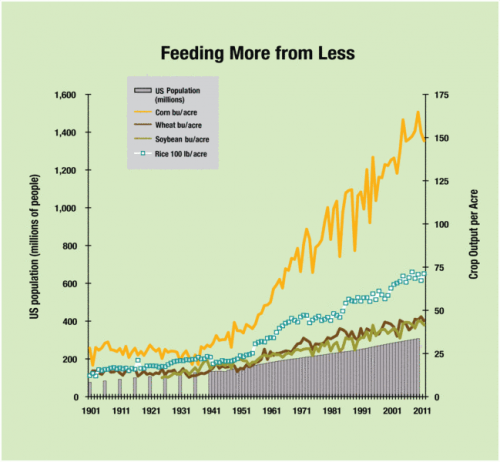OMG: NYT Discovers President's Son-In-Law Using Tax Deductions That ... Every Single Entrepreneur I Know, Including Me, Uses
This New York Times article here could have been a perfectly reasonable thought piece on the (perhaps unintended) effects of several provisions in the tax code. But in an institutional desire to land a few more blows on Trump, they tried to morph it into a hit piece on Jared Kushner --"Jared Kushner Paid No Federal Income Tax for Years" screams the headline.
Look NYT: I find Trump distasteful as well. But you only embarrass yourself presenting as some kind of investigative bombshell that Jared Kushner used perfectly legal deductions to minimize his tax bill.
I recommend this ZeroHedge summary to you as a quick way to get to the meat of the Times article. As they summarize it, the Kushner tax "maneuver" consists of:
tep 1: The Purchase
Kushner Companies buys a property. The majority of the money for the purchase comes in the form of mortgages and personal loans from banks.
Step 2: The Write-Off
Under the federal tax code, real estate investors can write off the purchase price of the building — excluding the cost of the land — over a period of decades. Although Kushner Companies has spent little or no cash of its own, the firm takes large annual deductions based on the theoretical depreciation of the building.
Step 3: The Loss
The property generates cash for the Kushners. But any earnings, which would be subject to the federal income tax, are swamped by the amount that the company is taking in write-offs for depreciation. The result is that Kushner Companies records a net loss for tax purposes.
Step 4: The Investors
The company passes on that loss to its owners, including Mr. Kushner and his father, Charles.
Step 5: The Offset
The loss can be used to offset the Kushners’ income in the year it is recorded, and it can be carried forward to cancel out future income or to get refunds for taxes they paid in previous years.
Step 6: The Deferral
When Kushner Companies sells a property, it can use the proceeds to finance a new acquisition. If done within the right time frame, the company can indefinitely defer any capital-gains taxes it might owe on the sale of the original property.
So here is my confession. I did the exact same thing just last year on my taxes. Take one example: One of my businesses bought and installed $350,000 of equipment. I financed 100% of this purchase. The article says that Kushner depreciated his real estate purchases over decades but the tax code's accelerated depreciation provisions allowed me to depreciate this purchase 100% in the first year. So I had an immediately $350,000 loss that I netted against other income, grealy reducing my taxes on that income. In fact, I don't think I was able to use it all due to various tax rules and I carried over a part of it to cover 2018 taxes or beyond.
One could argue about whether the accelerated depreciation provision I took advantage of is too generous, but the tax code is always going to allow depreciation against some formula (or else every business would be substituting crazy rental schemes for capital investment).
Let's take each step from above
- The Times wants to make a big deal that somehow the fact that he is using borrowed money to buy assets is a factor in this, but why? They imply a couple of times that all the debt reduces his ownership, but that is not true. He still owns 100% of the asset (with the proviso the bank has a lien that is only meaningful in case of default. His equity is only a fraction of the purchase price, but that is a different thing and says nothing about his ownership
- The depreciation provisions are pretty standards as described across all businesses, except to say that they are less generous than the ones I get buying equipment. Again they seem to think that somehow the fact that he borrowed most of the money is relevant to this -"Mr. Kushner is getting tax-reducing losses for spending someone else’s money" -- but his financing strategy is not the least relevant. He took on a costly and risky long-term obligation when he borrowed the money. Is the NYT arguing for requiring cash accounting for taxes?? This is just embarrassingly ignorant.
- This is entirely normal
- This is entirely normal for s-corporations and LLC's. These were promoted for small business, and they are fabulous tools for entrepreneurs, but you have to provide these legal tools to all people, even to rich people in families you don't like.
- This is entirely normal. Any other rule would be grossly unfair and a kick in the nuts for entrepreneurs. I often spend money this year that generates revenues next year. The tax code recognizes this and agrees that the losses I took this year can be netted against the revenues next year that they helped to facilitate.
- This is the only thing that is mildly unique to real estate and his business. I don't really get the same rights with any of my assets, though my assets mostly depreciate rather than increase in value. I won't pass judgement on this one, but I suspect that it has a lot of support (homeowners get it, for example, as do owners of second homes).
Nowhere is there even a suggestion of how the tax code might be altered to fix those things the NYT does not like about it. I would suggest that any step that would alter any of the 6 steps above would be opposed even in a Democratic Congress. This all reminds me of a piece a few years ago arguing that oil companies got a lot more subsidies than renewables like wind and solar. Checking it out, the vast, vast majority of the subsidies were ... LIFO inventory accounting and depreciation, both tax rules that are 1) merely about timing of taxes and not total paid and 2) apply to all manufacturing businesses in all industries.


